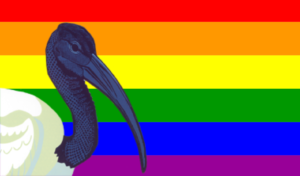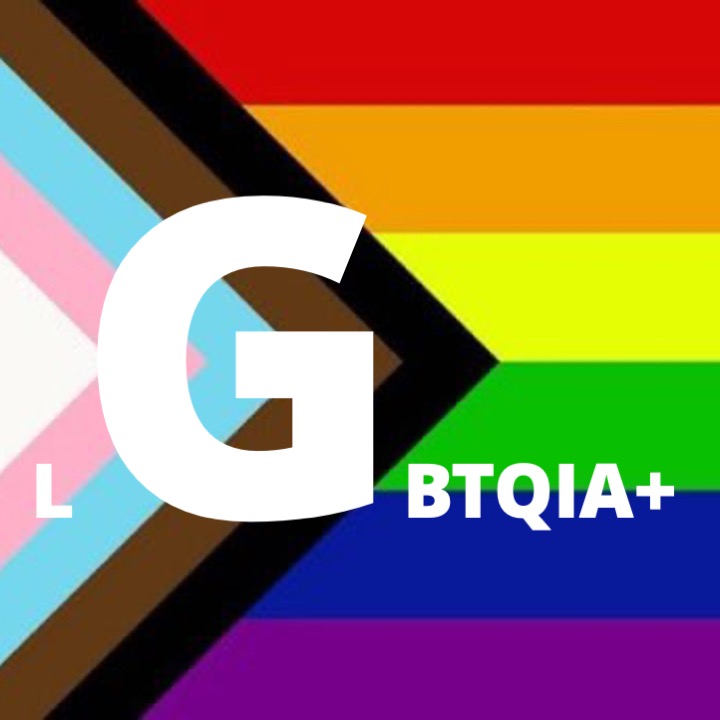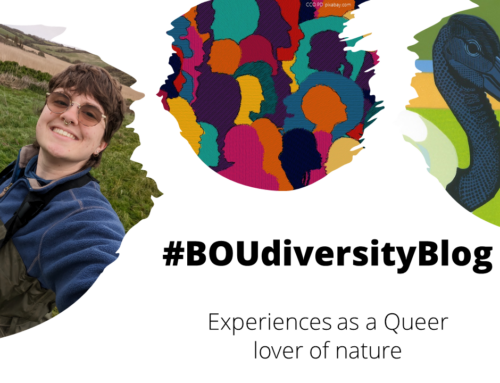 I have never been one to relish attention. I have tended to avoid confrontation, seek out the middle ground, and keep my head resolutely below the parapet. Being gay, this has at times presented me with something of a challenge. Over the years, I have become increasingly conscious that my under-the-radar approach is only possible thanks to the bravery of others. Not just the prominent and internationally visible campaigners, but also those plucky souls within our more immediate communities whose presence and openness help to bring about progress, however incrementally.
I have never been one to relish attention. I have tended to avoid confrontation, seek out the middle ground, and keep my head resolutely below the parapet. Being gay, this has at times presented me with something of a challenge. Over the years, I have become increasingly conscious that my under-the-radar approach is only possible thanks to the bravery of others. Not just the prominent and internationally visible campaigners, but also those plucky souls within our more immediate communities whose presence and openness help to bring about progress, however incrementally.
For me, the process of coming out, beginning around 15 years ago, was relatively gradual and, mercifully, relatively smooth. I would tell important people in my life as and when the moment felt right and I plucked up the courage. I have been fortunate (and I am acutely aware that this is not always the case) that those around me were understanding and supportive. That’s not to say I didn’t inflict upon myself a considerable amount of worrying and fretting; I can assure you, there was plenty of that. Now though, the worrying, on that front at least, is behind me, and I’m able to direct my energy elsewhere.
Right now, I’m in an uncertain place. I’m in a new country, having moved to Denmark from the UK one year ago. Brexit looms and a pandemic is in full swing. I haven’t seen my family since last Christmas, and I’m not sure when it will be safe and sensible to see them again. I have a form of work, which I’m grateful for, but if I’m honest, it’s not that secure and not as fulfilling as I think I want my work to be. But in amongst this, one thing that has never failed to lift my spirits and put a spring in my step, is the nature on my doorstep.
I live in Aarhus, Denmark’s second city, in a part of the country known as Jutland—that part of Denmark connected to mainland Europe. A stone’s throw from where I live is Trøjborg cemetery, the setting for many a lunchtime stroll, where I’ve got to know a feisty Wren that can reliably be found energetically ‘chipping’ and hopping on a slate grey tombstone. Another couple of minutes walk down the road, and I’m in Riis Skov—or Riis Forest—where I’ve spent many happy hours amongst the nuthatches, Great Spotted Woodpeckers and Treecreepers. A particular highlight last Autumn and Winter was a couple of tawny owls perched in the lofty cavity of a towering beech tree, frequently drawing the attention of passing joggers and dog walkers.
Slightly further afield, but still only 25 minutes by bike, is Egå Engsø, a lake created 14 years ago by the planned flooding of agricultural land and now a haven for aquatic and aerial life. My short cycle out here is frequently rewarded with quite spectacular views of a pair of White-tailed Eagles. For a girl that grew up amongst the expansive wheat fields of the Suffolk-Essex border, that is not an everyday sight! A few kilometers to the West of Aarhus are the lakes Brabrand Sø, where in the summer I was delighted by the sound of booming Bittern, and Årslev Engsø, where I’ve admired small flocks of Bearded Tits rolling over the reeds.
All of these experiences, and countless others like them throughout my life, are comforting and calming. They have helped me to confront life’s challenges—whether that be fretting over identity or moving to a new country—and provided fuel for whatever may be around the corner.
My girlfriend is not a birdwatcher, but we share a love of the outdoors and the natural world, and over the years I’ve had great fun introducing her to the birdlife that we encounter. Since English is not her first language (and my Spanish continues to progress at a glacial pace) we’ve taken to coining easy-to-remember and/or easy-to-pronounce nicknames for the birds we encounter (for some reason, often food-related…). The Kestrels that visit the red-brick tower opposite our flat have become “casseroles”, the Red Kites that decorated the sky on our journeys between Oxfordshire and Suffolk were “kayaks”, Chaffinches have become “chiffle-chaffles”, and Magpies are affectionately know as “steak and ale pies”.
As a community, ornithology unites us and connects us. No matter our level of knowledge or individual perspective, I’m quite sure that everybody gets joy from the natural word. It is important that we live in a society, and indeed an ornithological community, where your sexuality (or your ethnicity, educational background, shape, size or any other variable) is not something that you need to explain or justify, or that warrants comment beyond that which you wish to provide. But until then — because we aren’t there yet — it can be helpful to hear these stories. To have something to connect to, empathize with, chuckle along with, or nod in agreement at. Perhaps some feel this openness isn’t relevant to ornithology, but I would counter that as a community we are all responsible for ensuring each member has a sense of belonging.
I have been a member of the BOU for eight years and I have always felt like I belong here. And yet, reading the Rainbow Blogs published so far, has had the curious effect of deepening my sense of belonging. The privilege of reading about other peoples’ LGBTQIA+ stories and perspectives, woven into their passion for ornithology, has for me been inspiring and affirming. I’m not sure I have anything especially unique or groundbreaking to share, but I hope that my contribution is its own quietly proud proclamation that we are here, we exist, and our community is better for it.
If you are interested in contributing to our Rainbow Blogs, please get in touch with us via this form which ensures anonymity for those who seek it.
If you’re a LGBT ornithologist working in the field and want support, then contact the LGBTQ+ Field Network.
If you want to learn more about LGBTQIA+, then Stonewall is a great place to start.




